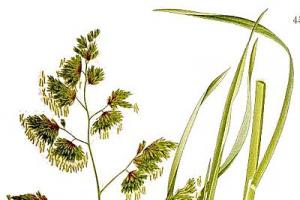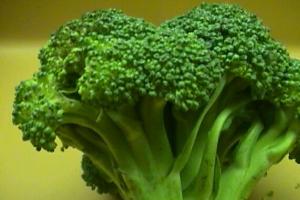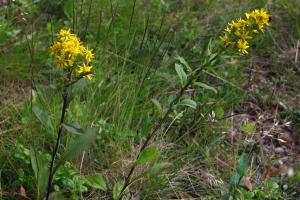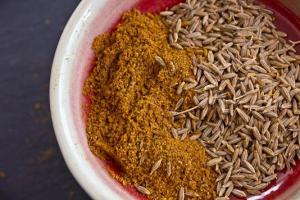How to properly collect and dry St. John's wort at home St. John's wort (Herba Hyperici) is also called the “herb for 99 diseases.” This plant received this nickname due to its medicinal properties, which have a beneficial effect on the entire body. You can prepare St. John's wort yourself. To do this, you just need to know a few simple rules for collecting this plant and the intricacies of drying it at home. Rules for collecting St. John's wort St. John's wort is a plant with a unique composition that can tone the entire body, forcing the immune system to work actively. At the same time, all parts of the plant have healing properties: stems, flowers and leaves. To achieve maximum therapeutic effect, they must be taken together. For the same reason, the grass is collected in whole branches and crushed before use. St. John's wort grows almost everywhere, in meadows and forest edges. It is quite rare to find large thickets of St. John's wort; usually these are small strips of bushes. To collect raw materials, you need to choose places far from landfills, roads and enterprises, since grass is capable of absorbing all harmful substances. St. John's wort has been considered a magical plant since ancient times, so it was collected on the day of Ivan Kupala, July 7, which coincided with the summer solstice. On this day, all the “magical” herbs were collected, suggesting that it was during this period that nature reaches its greatest flowering. If you do not take into account the exact dates, then the collection of medicinal raw materials should be carried out from mid-June to August. The main condition is that the plant actively blooms. It is strictly forbidden to damage the roots and cut raw materials from only one plant. By violating this rule, you can destroy the St. John's wort thickets in a given area. So, let's summarize: you need to collect St. John's wort in an ecologically clean area; the best collection time is June - August; you need to cut off plant branches, with flowers and unopened buds, no more than 35 centimeters long; the herb needs to be collected from different plants; you need to start drying immediately after collecting raw materials. How to dry St. John's wort Drying in the fresh air It is best to dry St. John's wort naturally, without resorting to heating devices. The grass is folded into small bunches. The bunches are fastened with a rope and hung down with flowers in dark, ventilated rooms. Attics and sheds are ideal for this. The main thing is that the grass should not be exposed to direct sunlight. Sunlight will destroy most of the healing properties of St. John's wort, and the collected herb will remain for you only a tasty drink that does not bring any benefit to the body. Another way of drying is laid out, on paper. To do this, spread St. John's wort in one layer on clean sheets of parchment. Periodically, the branches are stirred and turned over. Under no circumstances should you use old newspapers for grass substrate, as toxic printing ink will be absorbed into the medicinal raw material. St. John's wort can be dried in mesh bags. The collected grass is laid out in small portions in nets and hung in a dark, dry place. It is important that the drying room is protected from the weather and well ventilated. Natural drying time takes approximately 14 – 20 days. If the weather is dry and hot, then the grass can be dried in 7 to 10 days. Drying in an electric dryer You can also dry the grass in an electric dryer for vegetables and fruits. St. John's wort is spread on the grates in an even layer. The temperature of the unit is set at 35 - 40 degrees, not higher. If your dryer does not have a thermostat, and the standard operating temperature of the device exceeds the above values, then this method should be abandoned. How to store dried St. John's wort herb Well-dried St. John's wort is brittle and fragile. Dried bunches of grass can be placed entirely in cotton bags and tied with rope. St. John's wort can also be stored in crushed form. To do this, the grass is broken into small pieces and placed in glass jars or plastic containers. It is very important to store St. John's wort in the dark. A kitchen cabinet with a door is suitable for this. Subject to all storage conditions, the product can retain all its medicinal properties for 3 years.
St. John's wort (popularly known as hare's blood), a tall plant with bright yellow and fluffy inflorescences, absorbs all the power of nature throughout the summer. The peak of flowering occurs at the beginning of August, it is at this time that flowers accumulate in it.
The herb is useful for severe fatigue, depression, apathy, and as a quick aid for colds. In this article we will look at how to collect and dry fresh St. John's wort for the winter, for and.
A few words about history
In ancient times in Rus', St. John's wort was collected on the eve of Ivan Kupala Day (according to the new style, July 7). Ancestors noted that if a plant is treated carelessly when collecting, then next year the probability of finding it in the same place is noticeably reduced.
For sensitive people, a decoction of the herb will help normalize vegetative fluctuations when the weather changes. Women will benefit from a decoction of equal parts of St. John's wort and hop cones.Interesting Facts!
To concentrate attention, a decoction of St. John's wort and lemon balm is recommended - before the exam, it is enough to drink a cup of drink during breakfast. It is also useful at a time when fresh berries, vegetables and fruits are ripening; the decoction will help avoid gastrointestinal upset.
When and how to properly collect St. John's wort
- For medicinal raw materials, preparation of decoctions and tinctures, only one type is used - it is called perforated. Its difference is that there are many holes on the leaves of the plant.
- The plant can grow up to 80–90 cm in height, but only the top of the plant, no lower than 25 cm from the crown, is suitable for harvesting.
- Flowering time, unlike location, can be extended from mid-June to August. The plant is harvested only during the flowering period, until fruits appear on it instead of inflorescences (late September, October).
- It is best to collect St. John's wort during the day, in dry and slightly windy weather, so that morning dew does not remain on the branches.
- You should not collect raw materials near highways and industrial enterprises and factories. Plants can absorb toxic substances during growth and cause harm to the body when consumed.
- The stems of the plant are very tough, so it is recommended to take care of garden cutters in advance for collecting.

Video about how to collect St. John's wort
Important! Take care of nature, do not uproot the grass, this leads to a decrease in the population of this plant species.
How to properly dry St. John's wort to prepare medicinal drinks
Important! Once cut, the plant cannot be stored in sunlight for a long time. Oxidation occurs in it, it begins to darken and fade. This happens due to overheating. Therefore, when collecting a large amount of raw materials, it must be immediately placed in the shade or laid out/hung in bunches to dry.
How to dry fresh St. John's wort for tea? The answer to this question is simple: just like medicinal preparations, without overdrying, following general recommendations and advice.
- The drying room must be well ventilated. Be cool and dark;
- When drying on the table, it is recommended to lay out the plant in one layer;
You can use special dryers, but the temperature during operation of the device should not be higher than 40C, if the temperature is higher, there will be no trace of the beneficial properties and essential oils. For drying in the form of bunches, two to three days will be enough, if during this time there was no heavy precipitation, i.e., the humidity in the atmosphere was within normal limits. 
Signs of high-quality dried St. John's wort:
- twigs break easily and with a characteristic crack;
- The plant should not have seeds (fruit pods), and must have yellow flowers.
If the grass is not completely dried, then during storage, dark spots and mold will appear on the leaves. Such raw materials should absolutely not be used for preparing medicinal drinks.
You can store the grass in bunches in which the plant has dried. It is important that there is dry air in the room and that it is ventilated.

Another storage method is to grind the leaves and flowers from the stem. It is best to pour the resulting raw materials into a linen bag made of natural fabric (cotton or linen).
If possible, try to avoid direct sunlight and light on the dried product and keep the preparations away from moisture.
St. John's wort- Hypericum perforatum L. is a perennial herbaceous plant from the St. John's wort family (Hypericaceae) with erect stems 40-80 cm high (up to 1 m), branching in the upper part. There are 2 longitudinal ribs along the stem. The leaves are opposite, sessile, oval, oblong-ovate or linear-oblong, 1-3 cm long and 0.5-1.5 cm wide, entire, with numerous translucent pinpoint glands, making the leaf seem as if perforated by a needle (hence the species Name).
The flowers are quite large (up to 3 cm in diameter), numerous, collected in terminal broad paniculate or almost corymbose inflorescences. The perianth is double, 5-membered. Sepals are green, with black glands. The corolla is golden-yellow, the petals are dotted with black-brown or purple dots, especially along the edges. There are many stamens in each flower; they grow together at the bases of the threads into 3 bundles. Pistil with an upper 3-lobed ovary and 3 styles.
It blooms from May to August, the fruits ripen in July-September. The fruit is an oblong-ovoid brown leathery capsule with numerous small seeds. The seed has a dotted pitted surface and is dark brown in color.
Distribution of St. John's wort
St. John's wort is found in the temperate zone of many regions of Eurasia. In our country, this plant is quite widespread in European Russia, the Caucasus, Western and Eastern Siberia (it reaches the Baikal region to the east).
St. John's wort grows in meadows, steppes, among bushes, forest edges, clearings, cleared forests, and near roads. For medicinal purposes, the plant is sometimes grown in specialized farms.
Other related species of St. John's wort
Together with St. John's wort, the raw materials of another very similar plant, St. John's wort (Hypericum maculatum Crantz), common in the same areas and in the same habitats, are harvested and used equally for medicinal needs.
This species is well distinguished by its tetrahedral stem with clearly defined 4 longitudinal ribs, while only 2 longitudinal outgrowths stretch along the stem of St. John's wort. In addition, the sepals of St. John's wort are oval, with a blunt apex, while those of St. John's wort are lanceolate and sharp.
Features of St. John's wort preparation
St. John's wort raw materials are harvested during flowering of plants. They cut off the upper part of the flowering shoots with a knife or sickle, tie them into bunches and hang them to dry in attics, sheds, or awnings. You can dry the raw materials without tying them in bunches, but by spreading them in a thin layer on a clean mat.
Dried shoots of St. John's wort are “threshed” with sticks or rubbed on metal sieves. The raw materials for the preparation of medicines are a mixture of leaves, flowers, pedicels and thin stems. Large, coarse stems are an undesirable impurity that should be discarded, which is why threshing is necessary. Dry raw materials have a balsamic aroma and a bitter-astringent taste.
Economic use of St. John's wort
Flowering shoots of St. John's wort are added to alcoholic beverages for flavoring. In Russia, for example, such strong brands of vodka as “St. John’s wort” and “Erofeich” are known. The shoots and flowers of St. John's wort served as a dye to give fabrics and wool different shades of red. The aerial part was sometimes used in tanning leather.
Medicinal value of St. John's wort and methods of medicinal use
The aerial part (herb) of St. John's wort has medicinal value. It contains flavonoids (up to 1%), tannins (up to 13%), essential oil, coloring matter (about 0.5%), resins, carotene, which is provitamin A (up to 55 mg), ascorbic acid, that is, vitamin C (up to 140 mg), vitamin PP, etc.
Medicines made from the herb St. John's wort have astringent, anti-inflammatory, bactericidal, wound-healing and choleretic properties. Pharmaceutical factories produce novoimanin, an active antiseptic drug for external use.
Novoimanin is used to treat burns, wounds, ulcers, abscesses, phlegmons, boils, mastitis, cracked nipples (using ointments and compresses), sinusitis, rhinitis. Novoimanin solution is also used for inflammatory diseases of the pharynx, larynx, nose, and ears. It is effective even in some acute and chronic purulent processes.
Based on St. John's wort, the drug peflavit was created, which has P-vitamin activity and reduces capillary permeability. Condensed extract of St. John's wort is sometimes used to treat vitiligo. The plant has properties that increase the sensitivity of the skin to the effects of sunlight.
St. John's wort has been proven to temporarily increase blood pressure and reduce intestinal motility.
A positive effect of plant preparations on blood composition in cancer has been noted, and an aqueous extract of the herb can have a sobering effect in cases of acute alcohol intoxication.
The herb St. John's wort is used as an astringent for gastrointestinal diseases, reduces the production of copious sputum in diseases of the respiratory tract, a tonic for cardiovascular diseases, a hemostatic for uterine bleeding, and as an anti-inflammatory for sore throats.
St. John's wort herb is included in many medicinal infusions (teas) for various purposes. This plant is widely used by homeopathic doctors.
St. John's wort has long been used in Russian folk medicine, it is called “a cure for 99 diseases”, it is brewed as tea and drunk for all kinds of ailments, and simply as a pleasant and healthy drink.
When treating stomatitis and gingivitis, an herbal infusion or a ready-made pharmacy tincture is used to rinse the mouth (dilute 30-40 drops in half a glass of water). It is also good to lubricate the gums with St. John's wort oil mixed with grass juice.
To rinse the gums and mouth, you can prepare a tincture of St. John's wort herb in 40% alcohol in a ratio of 1:5 at home. Add (like a pharmacy tincture) 30-40 drops per half glass of water or take 40-50 drops orally.
To prepare the oil, 20-25 g of freshly crushed flowers with an admixture of leaves are poured with 200-250 g of cottonseed or sunflower oil, left in a warm place for 2-3 weeks, stirring constantly, and filtered through 2-3 layers of gauze. Store in a dark bottle.
St. John's wort is also widely used as an external wound healing agent.
St. John's wort oil, the preparation method of which is described above, is used in the treatment of affected areas of the skin, ulcers, as well as in the treatment of hemorrhoids and rectal fissures. You can prepare an ointment from St. John's wort juice, evaporated by half, and butter in a ratio of 1:4. Keep refrigerated.
For bruises, bruises, abrasions, the following decoction helps:
Brew 20 g of herbs with 400 g of boiling water. Simmer over low heat until the volume is reduced to half. Take 1 tablespoon orally 3-4 times a day.
For external use, an ointment is prepared: 1 part of St. John's wort juice, thickened in air, to 4 parts of a base, for which you can take butter, lard or petroleum jelly.
For acne, it is good to wipe your face with a lotion prepared from an infusion of St. John's wort (50 g) and an infusion of calendula flowers (50 g) with the addition of 25 g of vodka. Leave for 7 days, strain. For severe pustular rash, you can add 1 teaspoon of celandine herb juice to the lotion.
A cold infusion of St. John's wort is useful for wiping sluggish aging skin.
For diseases of the kidneys, bladder and urinary tract, a decoction of St. John's wort is used, which has diuretic, anti-inflammatory, and antibacterial properties.
Pour one tablespoon of raw material into 1 glass of boiling water, boil for 15 minutes, strain. Drink 1/2 glass 3 times a day.
Take 40 g of dried herb with St. John's wort flowers per 1 liter of boiling water. Leave, wrapped, for 2-3 hours. Take instead of tea and water without the norm. A glass of tea with St. John's wort, taken before bed, protects children and adults from involuntary urination during sleep.
From time immemorial, Russian folk healers considered the most reliable remedy for urinary incontinence to be a mixture of two herbs: St. John's wort and yarrow.
They should be taken in equal quantities, brewed and drunk 1 teaspoon per dose.
If you have a frequent urge to urinate, you should exclude celery, watermelon, very ripe grapes and asparagus from your diet until bladder complications go away.
An effective pain reliever for diseases of the stomach and intestines is St. John's wort oil. It should be taken in the morning on an empty stomach, 1 teaspoon. Herbal infusions also have a good healing effect.
The infusion is prepared at the rate of 1 tablespoon of chopped dry herbs per glass of boiling water. Boil for 10 minutes. Take chilled 1/3 cup 3 times a day for 30 minutes. before meals for acute and chronic colitis.
Oil from the flowers is taken for peptic ulcers of the stomach and duodenum.
To do this, fresh St. John's wort flowers are infused in sunflower oil for 2-3 weeks.
For inflammation of the liver, gall bladder, and a tendency to diarrhea, the infusion is prepared as tea by brewing 1 tablespoon of herb in 1 glass of boiling water. Take 1/4 cup chilled 3-4 times a day for 30 minutes. before meals.
St. John's wort relaxes the smooth muscles of the bile ducts, blood vessels of internal organs, and relieves spasms in the intestines. However, medicinal herbal preparations for hepatitis, cholecystitis, and cirrhosis of the liver should be used taking into account individual indications and contraindications. According to V. Gorodinskaya, cases of death have been reported abroad due to the use of St. John's wort for hypertrophic cirrhosis of the liver and nephritis.
Pour one tablespoon of St. John's wort into 1 glass of boiling water, boil for 15 minutes, strain. Drink 1/4 cup of the decoction 3 times a day.
Steam 5-6 shoots of St. John's wort in 1 liter of boiling water, add 50 g of honey. Drink during the day instead of water, preferably for 20-30 days.
Eliminate spicy, salty, smoked, fried, fatty foods from your diet.
Pour one tablespoon of herb into 1 glass of boiling water, boil for 15 minutes, strain. Drink 1/4 glass 3 times a day for inflammatory diseases of the female genital organs.
Take 20g of St. John's wort per 400ml of boiling water. Simmer to half the volume over low heat. Take 1 tablespoon 3 times a day.
St. John's wort - 1 part, - 0.5 parts.
Pour one teaspoon of the mixture into 200 ml of boiling water, cover and leave for 4 hours. Drink in equal doses throughout the day. This decoction not only relieves pain, but also regulates the menstrual cycle and also has a diuretic effect.
Ibn Sina also wrote about this: “St. John’s wort strongly drives urine, but its special property is to drive menstruation.”
15 g of St. John's wort pour 200 ml of water, boil for 15 minutes, wrap, leave for 45 minutes, strain. Drink 1 tablespoon 6 times a day.
For headaches associated with hot flashes or colds, drink 1/4 cup 3 times a day of St. John's wort decoction: pour 1 tablespoon of the herb into 1 cup of boiling water, boil for 15 minutes, strain.
St. John's wort - 3 tablespoons, dead nettle flowers () - 2 tablespoons, blackberry leaves - 2 tablespoons. Grind everything, mix well, pour 3 cups of boiling water. Infuse, wrapped, for 3 hours, strain. For anemia, take 1 glass 3 times a day hot.
To treat a runny nose, pour two and a half tablespoons of St. John's wort into 250 ml of boiling water, leave until it cools completely, and strain. Drink throughout the day in equal portions every 15-20 minutes. before meals. Use this decoction to also rinse your sinuses. You can take St. John's wort herb for 5 weeks, but after 3 weeks a week break is required.
Prepare medicinal oil: pour 25 g of St. John's wort herb into 0.5 liters of olive or sunflower oil, place in a dark place for a month and a half, then strain into a dark glass container. If you have a severe runny nose, you can also make an ointment: mix one part of St. John's wort infused with oil with 1 part of Vaseline. Insert with a cotton swab into the sinuses. Even if these remedies help well, they must be alternated with others that do not contain St. John’s wort.
St. John's wort oil - 1 part, honey - 1 part.
Mix thoroughly and lubricate the sinuses with a cotton swab. At the same time, drink tea with fig or raspberry jam. It is better to do this procedure in the afternoon or before bed.
“St. John's wort, boiled in wine, helps with hip pain and inflammation of the sciatic nerve, especially if you drink this medicine for 40 days in a row. St. John's wort seeds are very helpful for pain in the anus and for its relaxation if you sit in their decoction.", says Avicenna (Ibn Sina).
Take 10g of dry herb per 1 cup of boiling water. Infuse, covered for 1 hour, strain. Take 1 tablespoon 2-4 times a day after meals. Alcohol or vodka tincture of St. John's wort herb, take 30 drops with water 3 times a day after meals for rheumatic diseases.
Crushed herbs infused with sunflower oil and mixed with turpentine are rubbed on sore joints. 4" St. John's wort oil is used to treat burns: pour one tablespoon of St. John's wort flowers into 1 glass of vegetable oil, leave for 14 days, shaking occasionally.
Infuse one part of fresh St. John's wort flowers in 2 parts of oil (sunflower, olive, linseed) for 21 days in a dark place. Then strain and squeeze. The resulting oil is successfully used in the treatment of burns, even if 2/3 of the body surface is affected. Oil compresses are applied to the affected sore areas. This oil is also used to treat rashes on the lips due to colds.
For burns, lotions or compresses made from an infusion of St. John's wort flowers help well: pour 1.5 tablespoons of flowers into 250 ml of boiling water, simmer over low heat for 5 minutes, close, wrap, leave for 30 minutes, drain and strain.
Ibn Sina's advice
“A medicinal dressing made from St. John's wort leaves helps against fire burns and heals large wounds and malignant ulcers. ‘If you crush the leaves and sprinkle them on loose and rotten ulcers, it is beneficial...’
For foot care and cracked heels, you can use the following collection:
St. John's wort - 2 tablespoons, juniper cones - 1 tablespoon, yarrow - 2 tablespoons, wormwood - 1.5 tablespoons.
Pour the collection over 1 liter of boiling water, close, leave for 4 hours, strain, add 2 liters of boiled water. Use the resulting infusion to soar your feet. There is no need to wipe.
St. John's wort tea has great healing power: it stops inflammatory processes in the body, stimulates the heart, the activity of the endocrine glands, regulates the functioning of the gastrointestinal tract, normalizes the central nervous system, and has a restorative and tonic effect.
One or two tablespoons of crushed St. John's wort herb with flowers and leaves are poured into an enamel bowl with 1 liter of water, brought to a boil, and left for 15-20 minutes. filter through a strainer and drink with honey and sugar, like tea.
Contraindications. The herb St. John's wort is low-toxic, but when used for a long time in its pure form, it can cause discomfort in the liver and a feeling of bitterness in the mouth. St. John's wort slightly increases blood pressure, so people suffering from hypertension are prescribed it only as a herbal mixture and in small doses.
When taking infusion or tea from St. John's wort, it is necessary to refrain from tanning or exposure to the sun, since the substances contained in the herb increase the skin's sensitivity to ultraviolet rays. Violation of these rules can result in burns and severe dermatitis. They are especially difficult for blondes and people with delicate skin.
God's flower
Hear God's servant's voice
Hear, help,
Take away the pain.
I love you,
I tear it up in time,
I collect flowers
I protect your roots
I don’t rip everything off,
I leave it to the angels.
I'm not lying, I'm not lying,
I will also help the enemy.
My heart is simple
Anyone can understand grief
And understand this misfortune -
Heal with your juice, -
An unnamed folk healer lovingly addresses St. John's wort.
“There is a herb called St. John's wort, it grows in high places, an elbow high, the leaves are small, the leaf is close to the leaf, it's the color, but when you crush it, it's bloody. Drink from a bruise,” this is what is said about it in an ancient herbal book.
Another ancient recipe states: “St. John’s wort is a well-done blood-herb. A strong infusion is used as a lotion for bruises, abrasions, external abscesses and lesions. An infusion of the herb in the amount of 4-8 spools per bottle of water, take a glass a day, is best used on an empty stomach against chronic pulmonary catarrh, chest pain, suffocation, cough, aches, and also to strengthen the stomach.”
In French, its name sounds like “millepertuis” - “a thousand passages”, and indeed, if you carefully examine the transparent leaves of St. John's wort, these passages are easy to detect. The specific name of the plant is connected with this - St. John's wort. The "passages" appear as tiny holes, which are actually translucent glands that secrete aromatic oil; black glands border the petals and sepals and secrete a “bloody” colored oil. These “passages” and “blood” most likely predetermined the purpose of the plant as a means of healing wounds. This is confirmed by the English name of the plant Balm-of-Warrior - “balm of warriors”.
“Enemy of demons” - this is what ancient healers called the plant. There was a popular belief that this herb was “a weapon given by the Lord God against witches and the devil.” Later mention of St. John's wort can be found under the name "God's grass" or "God's grace."
But what words about St. John’s wort, also called “God’s flower,” can be read in the book “Folk Recipes. Useful advice from Grandmother Mary and Mother Elizabeth.”
“Sent by God for thousands of years.
Who knows his worth?
He stores it for the whole year.
Because it heals many diseases.”
According to Raphael, St. John's wort is ruled by the Sun and is especially healing for people born under the sign of Leo.
Drinks made from medicinal herbs are the very first medicine that man used at the beginning of his history. It was herbs that replaced pills and mixtures for him and coped with many ailments. What properties does St. John's wort have and how to prepare healthy tea from it?
What are the benefits of St. John's wort?
St. John's wort - this plant has been used in folk and classical medicine for many years. Belongs to the group of restorative medicinal herbs with highly pronounced biological activity of the components. The benefits and harms of St. John's wort tea are determined by its component composition. The following substances were found in the stem, leaves and flowers:
- flavonoids (rutin, quercetin, etc.);
- tannins;
- essential oils;
- catechins;
- carotenoids;
- ascorbic acid;
- a nicotinic acid.
Dried herbs are used for tea
But the main active ingredients are hypericin and pseudohypericin. These are natural antidepressants. They are able to regulate the activity of the human nervous system and have a weak sedative property. Based on this, preparations, tinctures, teas made from St. John's wort have the following properties:
- anti-inflammatory;
- astringent;
- antiseptic;
- stimulating.
The ability of the plant to help the nervous system cope with psycho-emotional stress and prevent the development of depression has also been confirmed. A pronounced property is antispasmodic, which concerns the relief of pain and spasms in the intestines, stomach and other organs represented by smooth muscle tissue.
In folk medicine, this plant is used to strengthen strength, restore health after injuries, operations, and serious illnesses. It is useful for dystonia with low blood pressure, general weakness, fatigue, and depression. Most often, tea is prepared from St. John's wort, which tastes very pleasant and has a beautiful, intense color in the infusion.
The benefits of St. John's wort tea
To prepare medicinal teas, St. John's wort herb is used, which is collected during the period of intense flowering of the plant. During this period, it accumulates a maximum of useful substances, especially essential oils.

The flowers are rich in concentrated essential oil with a pronounced anti-inflammatory effect
What are the beneficial properties and contraindications of St. John's wort tea?
- Useful for colds and flu, as it has strong anti-inflammatory properties. It relieves pain and sore throat, helps cure sore throat, and strengthens the immune system. If you drink 2 cups of tea daily, you can cope with the cold season much easier.
- Helps with digestive problems. Relieves pain from gastritis and ulcers, improves metabolism, removes toxins. Can participate in a weight loss system with a limited diet.
- Helps with headaches, especially those caused by low blood pressure and migraines.
- St. John's wort tea helps with dental problems. A strong brew is used, which should be used to rinse your mouth 3-4 times a day to relieve inflammation, pain and bleeding gums. Rinses are indicated for periodontitis and stomatitis.
- Tea is beneficial for the female body. If you start drinking it before your period begins, you can ease its course in terms of pain and reduce the volume of discharge, which is important for heavy menstruation. For older women, tea will help them adapt more easily during menopause, balance hormonal fluctuations, and improve overall well-being.
- St. John's wort is an antidepressant, so drinks made from it can be used for stress, fatigue, increased excitability, and neuroses. It calms the nervous system and has a positive effect on sleep. Drink 3-4 cups of tea per day for 1-2 weeks.
If you regularly drink 1-2 cups of tea a day, you can prevent diseases such as cystitis, arthritis, arthrosis, cholecystitis. St. John's wort, the tea from which helps with digestive problems, can also be useful for problems with the gallbladder. It has a choleretic property, which means it prevents stagnation of bile and improves the digestion of fatty foods.
In folk and official medicine, many herbal preparations containing St. John's wort are known. The combination of several herbs allows you to enhance the effect of each of them and have a more pronounced effect. Most often, St. John's wort is combined with lemon balm, mint, fireweed, motherwort, chamomile, rose hips, and calendula.

St. John's wort and oregano - the most tonic collection
Combining herbs is much safer than drinking strong tea with St. John's wort. Especially if the drink contains dried berries, for example, cranberries, rose hips, rose petals, currant leaves. In this combination, St. John's wort will help increase vitality, improve venous circulation and blood flow to internal organs. In addition, the plant helps improve blood composition and strengthen capillary walls.
Harm and contraindications
You cannot drink St. John's wort tea for a long period of time. There should be breaks when taking any herbal drinks and medications. St. John's wort can reduce sexual function in both men and women. The main contraindications for the herbal drink relate to the following cases:
- the presence of allergies to pollen, grass and, in particular, St. John's wort;
- children under 12 years of age;
- high blood pressure;
- with exacerbation of colitis, ulcers, gastritis;
- taking hormonal medications;
- pregnancy and breastfeeding.
St. John's wort is one of the most powerful medicinal herbs, which is considered useful for 100 diseases. It is suitable for making tea, decoction, tincture, ointment, oil. Products based on St. John's wort are suitable for internal and external use. This is an almost universal herb, known to everyone since childhood.
Tea recipe
St. John's wort is a very common plant. It can be found in the meadow, in the forest, at the edge of the forest and near the river bank. That is why there are no problems with the procurement of plant raw materials. To collect, dry and use the plant yourself, you need to choose a clear sunny day and start cutting the plant in the morning.
This is done with a knife or scissors, cutting off the stem with well-blooming flowers, leaving several pairs of lower leaves at the root. If there is no dust or dirt on the plant, it can be left to dry rather than washed. It is best to dry the grass on the balcony, in the gazebo, in the attic - a room that is well ventilated and in which there is no bright sun. Only after St. John's wort has dried well can it be cut with scissors and stored in a glass jar or fabric bag.
- prepare a mixture of 1 part St. John's wort, 1 part rose hips crushed in a mortar and 2 parts oregano herb;
- Pour 1 dessert spoon of the collection into 250 ml of hot water;
- leave for 30 minutes, strain, drink warm.
This drink is best prepared in a thermos so that the rose hips are well infused and release their beneficial substances into the water. You can drink it 2 times a day, but not at night.
Recipe 3 – anti-cold:
- Separately brew dried cranberries and St. John's wort, take 1-2 tbsp of cranberries. l., St. John's wort as usual;
- the berries are infused in a thermos for 8-10 hours, St. John's wort is brewed immediately before use;
- Combine warm infusions and drink throughout the day, you can add honey or sugar.
If you don’t have time to do such a long preparation, you can brew St. John’s wort tea and add a few tablespoons of freshly squeezed cranberry juice to it. It is very useful. Both fresh and frozen berries are suitable.








